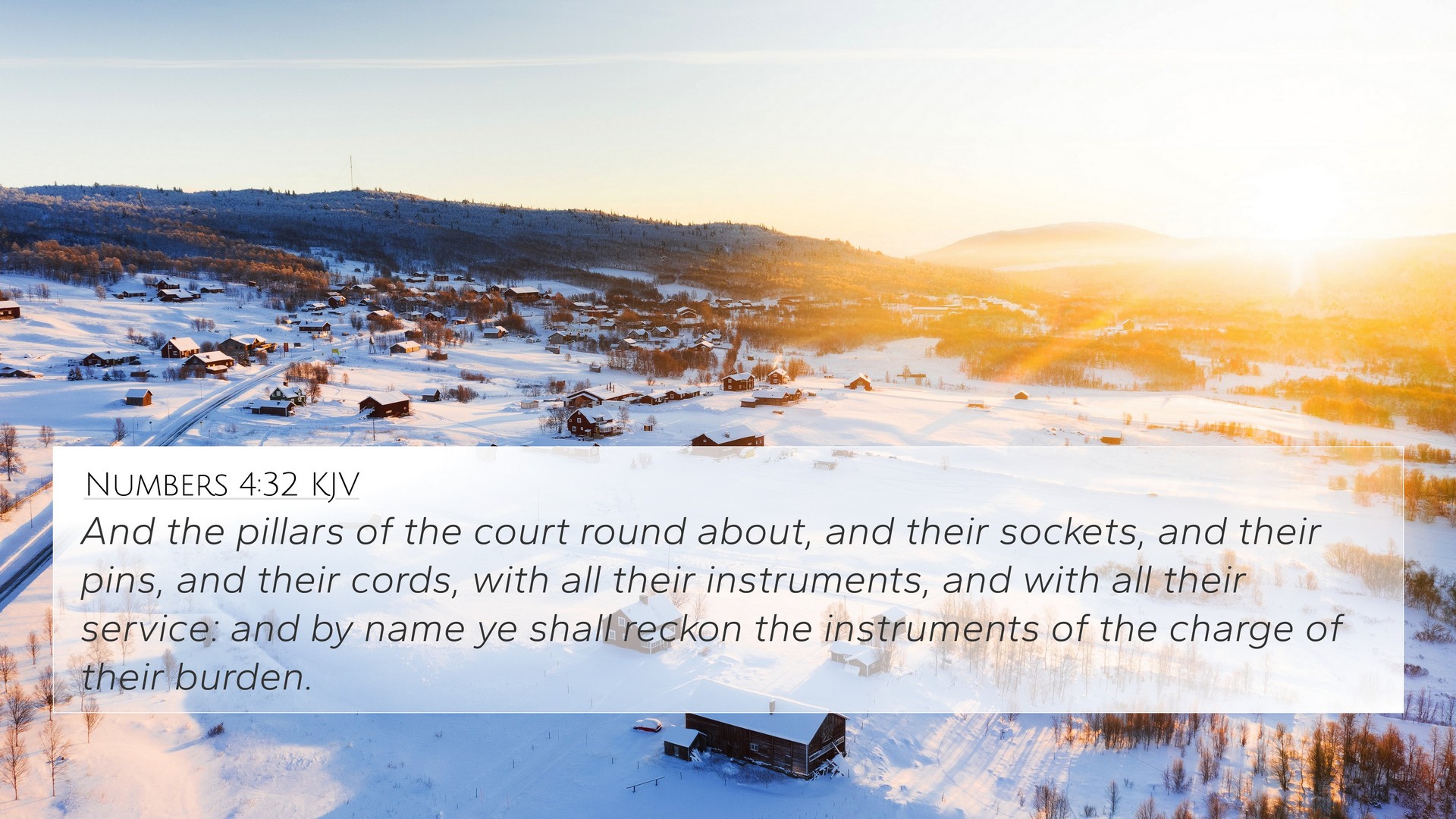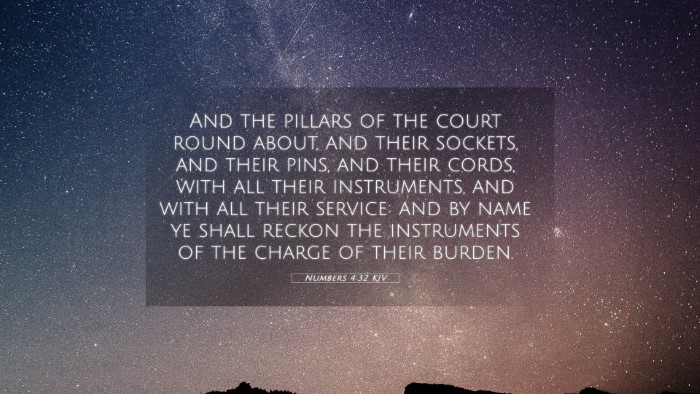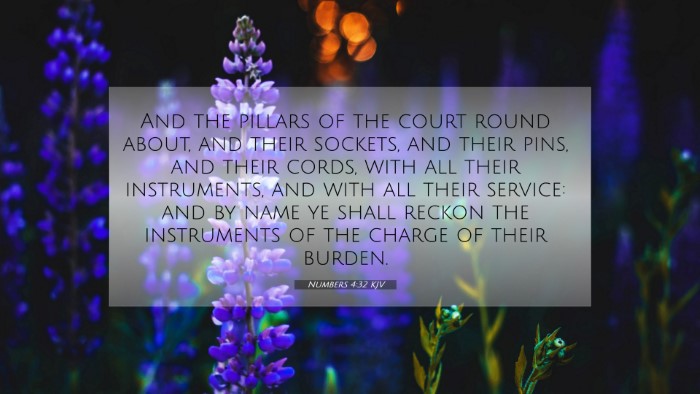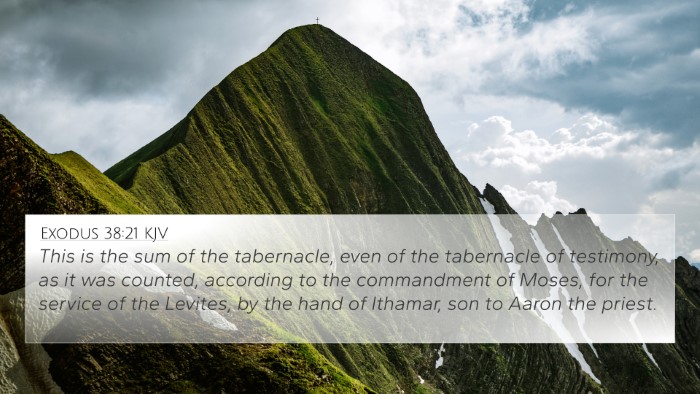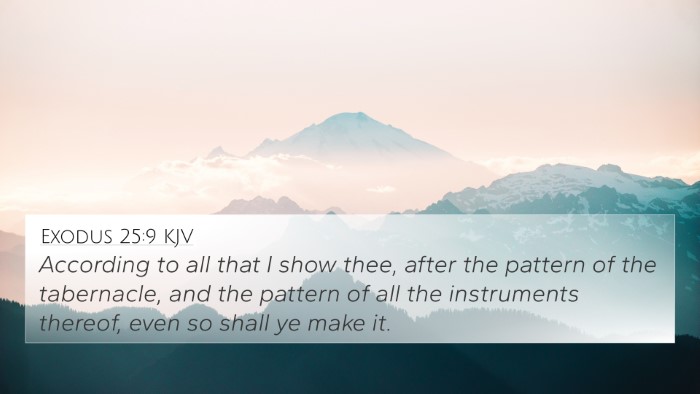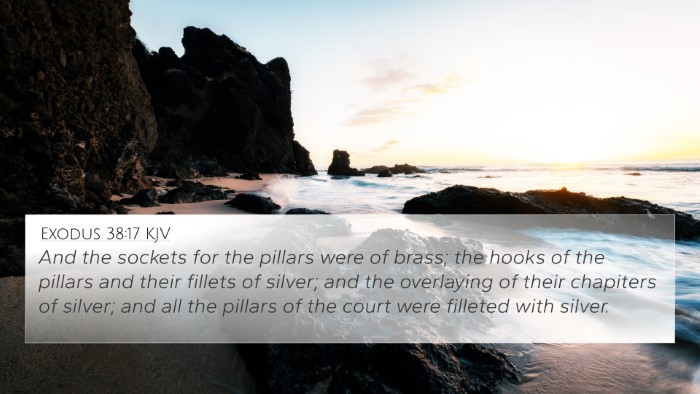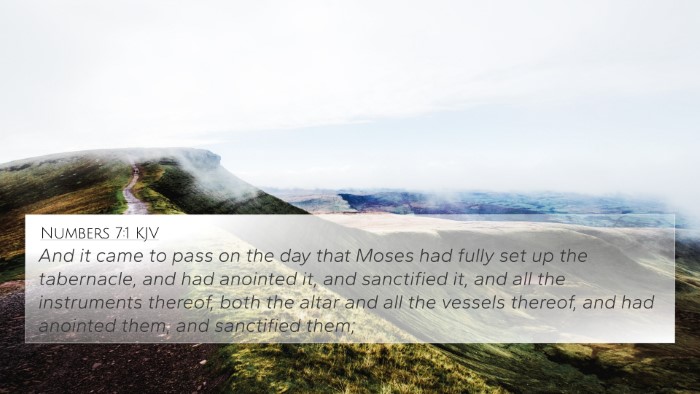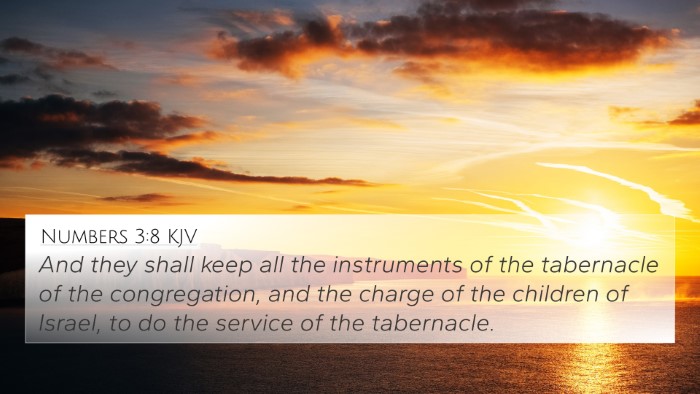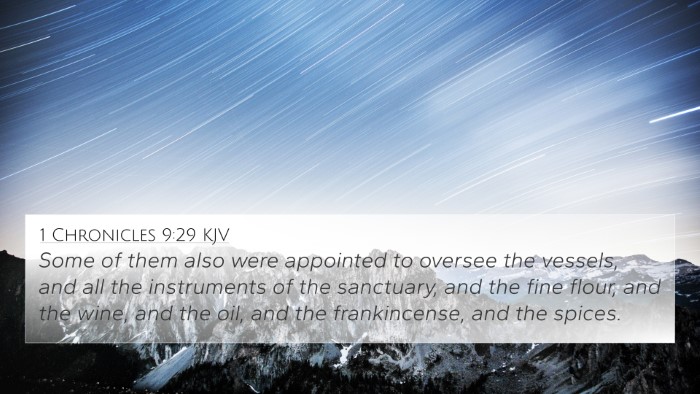Understanding Numbers 4:32
Verse: Numbers 4:32 - "And the families of the sons of Merari shall pitch behind the tabernacle westward." (KJV)
Summary of Meaning
This verse is part of the instructions given to the Levites regarding their roles and responsibilities in relation to the tabernacle. Specifically, it pertains to the family of Merari, one of the three sons of Levi. The response of the Merarites highlights their function in transporting and caring for the structural elements of the tabernacle.
Commentary Insights
-
Matthew Henry:
Henry emphasizes the importance of the Levites' roles. The specifics of their positioning signify divine order and structure within the community of Israel. The Merarites were responsible for carrying the more cumbersome elements of the tabernacle, which is noted to reflect their distinctive calling and the shared duties amongst the Levite families.
-
Albert Barnes:
Barnes notes that the Merarites pitched on the west side, which indicated their proximity to the entrance and their strategic role in the encampment. Their organization reflects the unity in service unto God, showcasing the broader theme of cooperation and division of labor in spiritual responsibility.
-
Adam Clarke:
Clarke offers insight into the geographic implications of the Merarites' location, noting that their positioning allows them to provide support during the assembly and dismantling of the tabernacle. This role reflects a deeper spiritual lesson about serving God in community and the importance of physical labor in worship.
Cross-References
To deepen our understanding of Numbers 4:32, it is insightful to explore related scriptures that reflect similar themes of divine order, service, and the care of holy things:
- Exodus 25:10-16: Detailed instructions about the Ark of the Covenant highlight the sacred responsibility of carrying holy objects.
- 1 Chronicles 23:6-32: Discusses the division of Levites into different responsibilities in the time of David.
- Numbers 3:6-9: Outlines the responsibilities of the Levites as a whole and their importance in the service of the tabernacle.
- Joshua 3:3: The commanded actions of priests and Levites echo the emphasis on order during sacred processes.
- Hebrews 9:1-5: Provides a New Testament reflection on the Levitical duties in the context of the temple and the heavenly realities.
- 1 Peter 2:9: Established a parallel to the royal priesthood, connecting the service of the Levitical priests to the ministry of believers today.
- Romans 12:1: Paul discusses the concept of our bodies as living sacrifices, connecting to the obedience shown in physical service.
Connections Between Bible Verses
The connections between these scripture passages reveal a cohesive biblical theme of service, communal responsibilities in worship, and the underlying divine order established by God.
As we study the Bible, it's important to utilize bible verse cross-references and tools for Bible cross-referencing, as they enrich our understanding and reveal deeper meanings through thematic connections. By engaging in cross-referencing Bible studies, we can uncover layers of meaning that inform both historical context and contemporary application.
How to Use Bible Cross-References
Finding cross-references in the Bible can enhance our reading experience. Here are some methods:
- Bible Concordance: A helpful tool to locate specific words and their occurrences throughout Scripture.
- Bible Reference Resources: Use study Bibles and commentaries that provide insights into connecting scripture.
- Online Bible Study Tools: Various websites and apps offer searchable databases for easy access to cross-referenced verses.
Conclusion
Numbers 4:32 is more than just a directive; it encapsulates a deeper call to recognize our roles in serving God. The meticulous organization highlights an eternal principle of order within the spiritual community, enhancing our understanding of God's intentions for His people.
As we pursue further studies, let us be reminded to seek out bible verses that relate to each other and explore how cross-referenced themes in the Bible create a mosaic of God's redemptive narrative from the Old Testament into the New.
